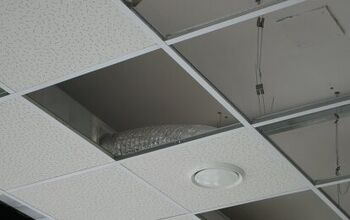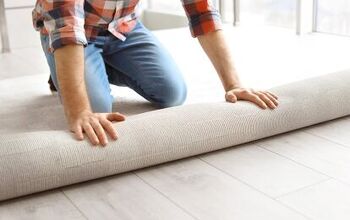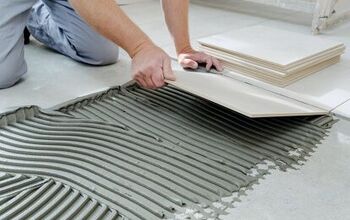Can Mold Grow Under Tile? (Find Out Now!)

Mold is one of the biggest risks that a homeowner can have. The moment that water comes into play is the moment that you can have mold grow in your home, eat away at your building’s materials, and cause damage to your health. That’s why we all need to keep an eye out for it. But what if it’s not seen? Can mold grow under tile and similar flooring too?
Mold can and does grow under tile when the conditions are right. Cracked tiles, water trapped under the tiling, and bad grouting jobs can all contribute to mold growth under tile floors. Homeowners need to address this issue the moment they believe they found evidence to it.
I’m not kidding when I say that mold is a serious killer. Black mold can be a reason for your home to be condemned and evacuated. Here’s what you need to know about this lethal risk.
Do You Need Mold Inspectors and Testing Services?
Get free, zero-commitment quotes from pro contractors near you.

How Is It Possible For Mold To Grow Under Tile Floors?
Mold will start to grow anywhere that has a lot of moisture. If your tiling isn’t installed properly or is chipped, water will start to seep through the tiles into the subfloor underneath it. This eventually will lead to water damage and (you guessed it) mold growth.
How Can You Tell If There Is Mold Under Your Tile?
At first, it will be hard to tell. Eventually, though, you will notice it pretty quickly. These warning signs suggest it is time to address your mold issue:
- You notice that your tiles and grout look black or brown. This is often a sign that you might have mold growing underneath your flooring. If you cannot scrub it away, it might be time to look into mold remediation or mold testing.
- Your bathtub has a ton of mold and so does your shower. If you can visibly see mold on the top of your bathing area, you probably have mold underneath the tiles too. That’s bad, bro. Really bad.
- The bathroom always has a strange odor to it that you can never seem to get rid of. Mold has a wide range of smells. Most people agree that is has a musty odor—not unlike an abandoned home. However, rarer molds can have a meaty smell or even stink like dirty feet.
- You notice visible water stains on your floor. This is usually a dead giveaway, since mold tends to start off as a water stain.
- You get sick after spending time in the bathroom. People who have mold allergies will get sick from being in an area where mold is under tile.
How To Get Rid Of Mold Under Your Tile
Truth be told, it’s not going to be easy. If you want to get rid of it, it’s best to follow this advice below.
Should You Go To A Professional?
Honestly, this is generally a thing that you should bring to a professional mold remediation company. While we can and will offer DIY advice, this is one of those issues that can cause serious damage to your home. If you do not eliminate all the mold, you will only have it come back stronger.
How Can You Get Rid Of Mold Under Your Tile Yourself?
You can try to mitigate the mold yourself, though it’s not advisable. Here’s what to do:
- First, remove all the items from the room and put on some clean clothes, gloves, and goggles. Get some gear that protects you from mold. Get extra clothes to help prevent the spread of mold in your home.
- Use a plastic sheet to seal the room off from the rest of your house. You do not want to have your home exposed to the mold.
- Pry off the tiles and floor trim. Do this gently. You should remove the entire floor, since you don’t want to have to redo this. A missed spot will bit you hard!
- Kill the mold. You can do this by coating the floor in a mixture of 1 cup borax to 1 gallon water, then waiting for 15 minutes. Scrub the mold with a stiff bristle plastic brush, then add another coat of borax. Wait another 10 minutes.
- Vacuum the area. A wet/dry shopvac is the best choice for this job.
- Clean mold off the tiles, then retile your floor. Whew! That’s going to be a job and a half in itself. Now you can see why most people prefer to let it be done by a professional crew.
How Much Does Professional Mold Remediation Cost?
It depends, but it’s not going to be cheap. It can cost anywhere from $1,500 to upwards of $5,000 depending on how much of your home has been affected by the mold infestation.
Do You Need Mold Inspectors and Testing Services?
Get free, zero-commitment quotes from pro contractors near you.

Related Questions
How do you get mold off tile grout?
Tile grout is a mold magnet, but it’s easy to get rid of. All you need to do is spray the grout with vinegar or bleach, and wait 10 minutes for the mold to die. Once that happens, you can scrub the tile and then rinse the area. You should see a marked improvement in your grout’s appearance as well as your home’s odor.
What does black mold look like?
As the name suggests, black mold has a dark black or grey-green look to it. It also tends to have a slimy or oily appearance, rather than the more common powdery look of most molds. If you believe that you have black mold in your home, it’s best to call a mold mitigation expert to see how bad the damage is. This is a lethal mold!
Does white distilled vinegar really kill black mold?
Studies show that spraying a surface with white vinegar is one of the most effective ways to mitigate mold growth. White vinegar will kill 82 percent of all molds and fungi, including black mold. To use it, spray (or pour) vinegar on the affected area liberally and then wait for 15 minutes. Scrub the mold away, and then leave the area to air dry.Just like that, you should be done with your mold issue.
Related Guide

Ossiana Tepfenhart is an expert writer, focusing on interior design and general home tips. Writing is her life, and it's what she does best. Her interests include art and real estate investments.
More by Ossiana Tepfenhart



























